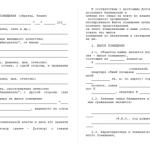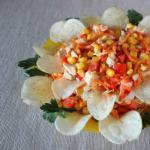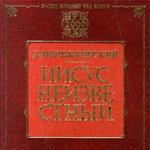What kind of paint can be used to paint plywood? How and what is the best way to paint plywood with your own hands? How to paint plywood - applying paint
The relevance of the issue of coloring plywood is not questioned, given the wide range of applications of this material. After all, wood sheets are used not only in repair work, but also in the production of furniture and decoration.
And naturally, coloring has its own subtleties, which we will talk about.
We paint from scratch
In this case, it is assumed that the slab will be completely prepared, and given how many stages there are in the preparatory process, we can say that treating the plywood before painting is the main and most important part of the entire painting process in general.
Before you start painting directly, you need to go through several stages, briefly it looks like this:
- The surface is sanded with 80 grit.
- Acrylic is applied.
- The leaf is dried.
- Processing is carried out with acrylic wood putty.
- Drying again.
- Once again the surface is sanded and primed.
- Coloring
Important!
This list is not mandatory; the only “iron” requirement is priming the material with acrylic impregnation.
It is designed to increase the resistance of plywood to moisture and the formation of fungus and mold on its surface.

Grinding
Sanding is necessary in order to completely eliminate any unevenness from the surface.
And the instructions say that the work is carried out here in several stages:
- The first sanding is carried out with coarse sandpaper No. 80 - 100. Moreover, it is performed strictly across the direction of the texture of the plywood board.
- But the second grinding will be necessary to give the plane an ideal state for varnishing and it is done with fine-grained sandpaper along the texture of the material.
- Next comes the preparation of the edges of the slab.. To do this, they are planed from the edge to the center, sanded and coated with acrylic paint several times.

Primer
Once the surface of the slab is in ideal condition for priming, you can begin to apply impregnation. It is used for this purpose, and acrylic impregnation and putty are used for application.
Below are the advantages of this processing:
- The absorbent surface of the plywood is finally leveled.
- The putty allows you to completely close all microcracks and defects in the veneer.
- Increases the service life of plywood sheets.
- Increases wear resistance and improves protection against mechanical damage.
Coloring
Important!
First of all, let us remind you right away that painting work can be carried out with alkyd and acrylic paint.
The difference is not that the price is different, but in the drying time.
Alkyd paint takes a little longer to dry.
Before painting, even during sanding, it will be necessary to decide whether it is necessary for the structural relief to appear, since this determines how and with what to treat the plywood before painting, as well as how many layers to apply during painting work.
As for the aspects of painting, it all depends on how the plywood will be used. The thing is that coloring not only gives the material a new bright color, but also acts as protection against moisture. Therefore, if the material will be used in places where the humidity level is above average, it is recommended to paint it on both sides.
Advice!
When using plywood in high humidity conditions, pay attention to the edges.
Even if they were repeatedly painted during sanding!
For residential premises it is recommended to use water-based acrylic paint. It does not have a strong or unpleasant odor, dries quickly enough, is not dangerous and is easy to apply, which is important for a person who is not particularly familiar with painting.
If you need to paint plywood outdoors, then enamel paints and varnishes are quite suitable for use, for example, pentaphthalic paint, which dries well outdoors and is easy to apply.

Paintwork materials may already be in a ready-made color or in a base color, then you will have to do tinting. It is best to do this in the store where the dye is purchased.
For painting, you can use three methods of applying paintwork:
- A simple brush. This option is good if you need to apply several layers. This way, divorces will not be visible.

- With a roller. For this application method, you will need a foam roller, without lint.
- With a spray gun. The highest quality application option, however, it will require certain knowledge.
As for the laminated surface, painting laminated plywood is absolutely no different from the usual process. Here are the same preparation procedures, which neutralize all the features of the laminate. Sanding and impregnation increase adhesion to paint, so the issue of laminated material is not so relevant.
And yet, if painting is not done with a spray gun, you will still have to use a brush to apply paintwork to hard-to-reach places. Otherwise, coloring is carried out like any other material. And it’s quite easy to do it yourself, of course, after preliminary preparation.

Conclusion
The process of painting work itself is not complicated; the main thing here is the step-by-step preparation of the material for applying paint. And the video in this article will provide all possible assistance in independent work from beginning to coloring.
For many years now one of the most common The floor covering is plywood. It attracts, first of all, with its affordable price. And the fact that it is a natural, strong and durable material only adds to its popularity. In most cases, it is used as a backing for more modern materials, such as carpet, etc. But it can also be used as a finishing decorative coating.
To figure out how to properly cover a floor with plywood, here are a number of basic rules:
- Before laying, the sheets are brought into the room where installation will take place and left there for acclimatization.
- If the base (cement or screed) is not level and there are significant differences on the surface, it is better to cut the plywood sheets into squares of 50-100 cm. In this case, voids will not form under the sheets, in which fungus can develop over time. For a smooth base, laying in solid sheets is allowed.
- Before laying, the base must be cleaned of construction debris and dust, and if necessary, wet cleaning must be carried out.
- The next step is primer. If you plan to use regular plywood, then you need to cover the floor with a moisture-resistant primer, preferably with antifungal effect (especially for wet rooms). When using moisture-resistant plywood, regular primer will do.
- The choice of glue also plays a big role; it can be: water-dispersion, polyurethane, epoxy. Read more.
- In addition to glue, the sheets must be secured with self-tapping screws, this is especially important when using water-based glue. Self-tapping screws with plastic dowels are best suited for this purpose. Hats should be of medium size, preferably galvanized.
Step by step coloring
After finishing preliminary work, the question arises: how to cover the plywood on the floor? For these purposes, you can use paint or varnish (or all together). Each of these methods has its pros and cons.
In any case, there is a certain algorithm of work that increases operational properties of plywood:
Grinding - can be carried out. Preliminary done coarse-grained sandpaper across the grain of the veneer. If you subsequently plan to apply varnish, then additional sanding is carried out with fine-grained sandpaper along the grain.
Particular attention should be paid to joints, knots and other problem areas. If necessary, you should use putty.
The priming procedure is most often done using an acrylic or alkyd primer. These works can only be carried out on a dry surface. If you plan to apply only varnish, then there should be at least 2-3 layers of primer.
Painting is one of the most important stages of installation. Painting is carried out only on a well-dried surface. Depending on the selected materials, temperature and humidity of the room, final drying of the soil may take several days.
There are several types of paints that may be suitable for these purposes:
- acrylic – are being manufactured water-based, harmless to health, odorless, easy to apply and dry quickly;
- alkyd – solvent-based, there is a pungent odor during the painting process (it’s better to work using protective equipment: respirator, goggles, gloves), have a more viscous structure, and take longer to dry.

Varnishing plywood
Varnish is applied either to primed surface, or onto a painted one (if the paint is glossy, then you can do without a varnish layer). This protective layer can be alkyd-urethane or urethane based.
The first option differs in terms of price and quality ratio. The rest belong to wear-resistant types, but cost a little more. For the best effect, the varnish should be applied in 2-3 layers at the time interval specified in the instructions.
Each layer dries for about five hours, and you can walk on the surface after a day. It will take about 4 days to completely dry, and when using a water-based varnish, the floor will be completely dry in a week.
There are times when appearance is not so important, but the main goal is to solve the question: How to cover plywood on the floor for moisture resistance. Here the well-known drying oil will come to the rescue. You can purchase it at any hardware store. You need to take it with a reserve, so that the surface is not just covered, but soaked through.

Natural drying oil for coating plywood
Tools
Painting and varnishing work can be done using a roller (with a lint-free surface) or a brush. If the volume of work is large and there are many angles on the surface, as well as hard to reach places, you can use a spray bottle or a soft sponge. Empty containers are also useful: a ditch or simple buckets, basins.
More information in this video.
Plywood is a universal material widely used in furniture production, repair and construction work. Its popularity is due to its good practical properties along with its low cost.
In this regard, the question arises whether it is necessary to paint plywood. There is only one answer - you need it! After all, paint and varnish materials will not only give the board a finished and neat look, but will also extend its service life, protecting it from moisture and other environmental influences.
It is important to note that plywood can be used both for rough work, as an auxiliary material, and as an interior decoration if used as a floor covering. The main thing is to properly prepare the material and decide how to paint the plywood on the floor.
The quality of painting, as well as the durability of the coating, depends on how carefully the board is processed before applying paints and varnishes.
Therefore, preparation consists of the following stages:
- Drying. Once saturated with moisture, plywood can change in volume and shape. Therefore, first of all, it must be thoroughly dried. To do this, it is not necessary to use special equipment - just lay the sheets out in a warm place for up to 7 days.
- Grinding. This process allows you to achieve the most even surface of the slab. After all, plywood itself has a heterogeneous structure with a large number of protrusions and irregularities. An electric grinder will help you achieve better results and make your work much easier. The movements should be directed first perpendicular to the textured pattern, and then along.

Sanding plywood
- Primer. Using an alkyd primer to treat plywood helps prevent the appearance of fungus and mold. It is especially important to take care of a high-quality primer if the plywood will be used in conditions of high humidity or for exterior finishing of a room. Before applying the primer, the surface must be cleaned of any remaining dust using a soft brush, a rag, or even better, a vacuum cleaner.
- Putty. After the primer has dried, it is necessary to cover the plywood sheet with a layer of putty. It will allow you to hide irregularities or cracks that are invariably present on the surface of the plywood. At this stage, we must not forget about processing the joining seams.
- Sanding. After the putty has dried, take coarse sandpaper No. 80-120 and smooth the surface.
- Application of acrylic primer. This is an important stage in the preliminary preparation of the slab. The special composition reduces the porosity of plywood, increases adhesive properties and serves as additional protection against moisture and mechanical damage.
This is all that is needed at the preparatory stage. When the top layer of primer has completely hardened, you can begin painting.
Of course, you can skip some steps, using only a primer and then paint right away. But this can only be done by assessing the quality of the slab itself, as well as determining the purpose of its use.
Important! If plywood sheets are painted before installation, they must be treated on all sides, including the ends. These places are the most vulnerable to moisture.
Watch the video on how to paint plywood:
Which paint to choose
The paints used to coat plywood vary depending on the substance from which they are made:
- Alkyd paints. A strong and durable coating reliably protects wood material from moisture or mechanical damage. The disadvantage of alkyd paints is their composition, which cannot be called environmentally friendly. The presence of turpentine or drying oil gives paintwork a pungent odor. Therefore, they are best used for external use.
- Water-dispersed. Eco-friendly material that is diluted with water. After drying, they form a thin but durable film on the surface. This type includes water-based, silicate, and acrylic paints. This coating is more suitable for indoor use.
The most popular material for painting plywood is acrylic paint. This is due to ease of application and quick drying. In addition, it has virtually no odor, so it can easily be used indoors.
Many manufacturers offer plywood that is ready for installation - sanded, primed and even painted. In this case, you won’t even have to think about how to paint the plywood. But such material costs much more than unprocessed material.

Colored plywood sheets
Advice! You can purchase a white base and give it the desired color yourself using dye, or choose ready-made colored paint.
Tools for painting plywood
To paint plywood you will need a sprayer, roller or brush. The choice of tool depends on the area of the surface being processed and the presence of small elements.
The sprayer gives the fastest and highest quality results. Thanks to a special application technique, plywood paint spreads evenly onto the surface to be painted. But such equipment has one big drawback - high cost. Therefore, it may be more advisable to use a lint-free foam roller. Some hard-to-reach areas can be painted with a brush.

Painting plywood with a roller
If painting in several different colors is intended, then masking tape is used for an aesthetic and neat design.
Features of paint application
Before painting plywood indoors, all furniture or floor coverings should be covered with film so as not to be damaged by the paint.
Using the selected tool, the coloring matter is applied in an even layer to the surface to be treated. The direction of movement must coincide with the direction of the wood fibers.

Painting with a wide brush
Do not apply too thick a layer of paint, otherwise drips and sagging will appear on the surface. Therefore, if there is a need for a thicker coating, then it is better to apply several thin layers of paint, waiting for each of them to dry completely.
Advice! If the plywood will be used in a damp room or outdoors, it is advisable to cover it with several layers of paint on all sides.
Varnishing plywood
You can choose another method of decorative finishing of slabs, using varnish instead of paint. In this case, you also cannot do without preliminary surface preparation, because all imperfections will be visible under the transparent varnish.
First, the sheet of plywood needs to be cleaned using fine-grained sandpaper. After this, clean the surface from dust and dirt and degrease.
Now you can apply the varnish. It is applied in several layers:
- after the first layer has dried, it is necessary to remove small fibers by sanding;
- the second layer will make the surface matte;
- the third layer will give the slab a noble shine.
The final coat of varnish is best applied using a sprayer to ensure even coverage. If such equipment is not available, you can use a foam roller or a wide brush.

Applying varnish
Varnish can be used not only as an independent coating, but also as a finishing touch after applying paint. This will make the colored surface bright and shiny. For the same purposes, you can use glossy enamel.
Decorative coating will allow you to achieve an aesthetic appearance of such a simple material as plywood. At the same time, treatment with special means gives the slabs increased resistance to environmental influences.
It is not fundamentally different from, but still has several nuances that need to be paid attention to in order for the processed material to please you.
Plywood- a very popular material, used for the production and finishing of furniture, interior design and even as flooring. Plywood consists of several sheets of thin wood veneer glued together. What caused the popularity of plywood? It's simple - it's an inexpensive, practical material. Plywood is light, very easy to process, has a natural composition, and has sufficient strength and durability.
Without additional processing, plywood, like any other type of wood material, suffers from external influences. One type of such protective treatment is painting plywood. Painting will help to significantly extend the life of the material, and will also help give the plywood an aesthetic appearance and fit it into any interior.
Let's take a closer look at how to paint plywood, what paint to paint plywood, and how to treat plywood before painting.
How and how to treat plywood before painting
Before proceeding directly to painting the plywood, it must be properly prepared so that the paint lays evenly and adheres well to the surface.
First of all, plywood must be dried before painting, especially if it has been stored outdoors for a long time. To dry the plywood, you need to leave it in a warm and dry room for several days, usually this is enough.
Next, the plywood needs to be sanded well. After sanding painting plywood will go more smoothly and the paint will lay down in a more even layer. Sanding is done first with high-grit sandpaper, and then with medium-grain paper.

After sanding, the surface is primed, most often acrylic compounds are used for this. The primer is used to protect the plywood from moisture, mold and rot. penetrates deeply into the layers of plywood and helps to avoid cracking of the material during operation. Also, the paint adheres better to the primed surface.

If there are cracks, chips or unevenness on the plywood sheet, then you need to putty the surface. will level the surface and hide all defects. After puttying, the surface is sanded again.
The next step in preparing plywood for painting is processing the edges. They must be planed, then thoroughly sanded and coated with a primer.
After all these manipulations, you can proceed directly to painting the plywood. But first you need to decide what you can use to paint the plywood.
Painting plywood. What paint to paint plywood

When choosing paint for painting plywood, you should consider where the material will be used.
It will be an ideal solution for material that is planned to be used indoors. Also in this case, any water-based paints are suitable. They dry quickly, are easy to apply and do not have an unpleasant odor.

If plywood will be used outdoors, where it will be exposed to precipitation, oil and enamel paints are well suited. They are also quite easy to apply, dry well and at the same time protect the material from moisture.
Varnish is also one of the options for processing the material. Can be applied either to an already painted surface or as a base coat.

How to paint plywood

Painting plywood can be done using a brush, foam roller or spray. The sprayer will be very convenient when painting a large surface; the paint applied with the sprayer will lay down in a thin and even layer. For edges and protruding elements, brushes of different sizes are used. A foam roller is also good for painting.
The paint for painting plywood can be ready-made, or it can be sold in the form of a base, which you need to tint yourself using colored markers in the color you need.
The paint is applied in several layers depending on the effect you plan to achieve. Usually two or three layers are enough.
If painting plywood is made with varnish, you must first sand the surface with low-grain sandpaper along the grain, then the surface must be degreased and proceed to applying the first layer of varnish. After the first layer, the pile will rise on the plywood, so after the varnish has dried, the surface must be carefully sanded again and only then apply subsequent layers of varnish.
Irina Zheleznyak, Staff correspondent for the online publication "AtmWood. Wood-Industrial Bulletin"






